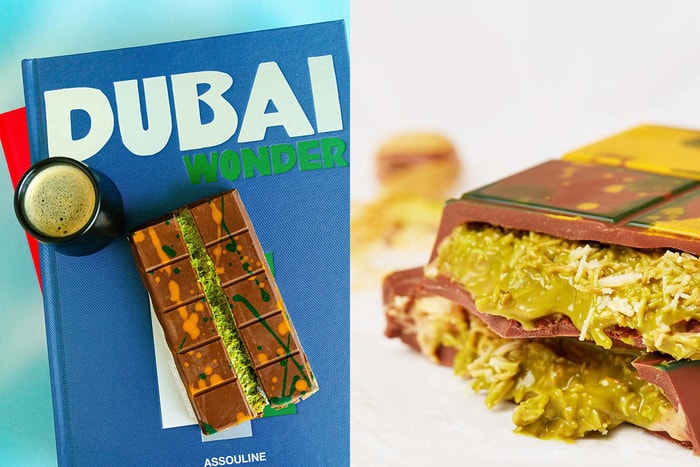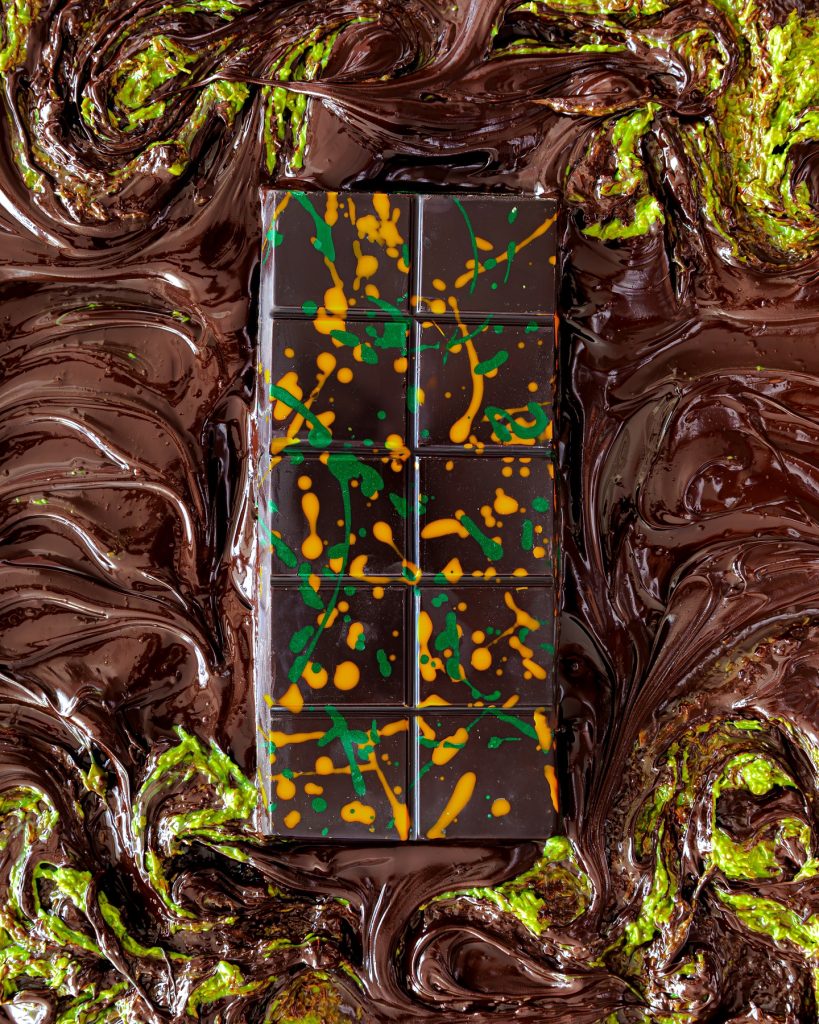The Art of Chocolate at Fix Dessert Chocolatier
Savor the Special High Quality of Handmade Chocolate Creations
The globe of handmade chocolate productions offers an engaging junction of artistry and science, where each confection is a testament to the skill of the chocolatier. These special delicious chocolates, crafted from carefully sourced cacao beans, disclose a selection of taste profiles shaped by their geographic origins and the thorough processes utilized in their development.
The Art of Delicious Chocolate Making
 The process of chocolate making is a fragile art that integrates both scientific research and imagination. After fermentation, the beans are dried, roasted, and split open to remove the nibs, which are the heart of the delicious chocolate.
The process of chocolate making is a fragile art that integrates both scientific research and imagination. After fermentation, the beans are dried, roasted, and split open to remove the nibs, which are the heart of the delicious chocolate.As soon as the nibs are refined right into chocolate liquor, the artisan chocolatier masterfully balances the percentages of chocolate solids, cacao butter, and sugar. This process calls for a deep understanding of temperature level control and timing to achieve the wanted texture and taste. Conching, a strategy that refines the delicious chocolate's texture, is typically used to get rid of any kind of grittiness and boost smoothness.
Temperature levels are thoroughly kept track of throughout the tempering process, making certain the chocolate gets a glossy surface and a satisfying snap when damaged. The last stage includes molding and cooling the delicious chocolate, where imagination shines via as artisans explore various forms and designs. Eventually, hand-crafted chocolate productions reflect both the thorough craftsmanship of the chocolatier and the abundant heritage of delicious chocolate making itself.
Taste Accounts of Handmade Chocolate
Hand-made chocolate's taste profiles are an unified blend of the cacao's origin, refining methods, and the chocolatier's virtuosity. Each area where cacao is grown imparts distinctive tastes; as an example, beans from Madagascar commonly display bright citrus notes, while those from Venezuela might offer earthy touches and refined seasoning. The terroir-- consisting of dirt elevation, top quality, and environment-- plays a vital function fit these unique qualities.
Handling methods more impact taste. Strategies such as fermentation and roasting can boost or diminish certain preference characteristics. A cautious selection of toasting temperature and period enables chocolatiers to unlock the complete potential of the cacao, advancing complex tastes ranging from fruity to nutty, and even floral.
The chocolatier's knowledge in blending different cacao ranges and incorporating corresponding active ingredients, such as spices or natural herbs, includes an additional layer of depth to the taste profile. fix dessert chocolatier. This virtuosity changes simple active ingredients into a sensory experience, boosting handmade delicious chocolate beyond mere confectionery. The outcome is an abundant tapestry of tastes that invites expedition and recognition, enabling consumers to enjoy the precise craftsmanship behind each one-of-a-kind development
The Significance of Quality Ingredients
 The foundation of extraordinary handmade delicious chocolate exists in the choice of the finest active ingredients. Premium cocoa beans, sourced from sustainable farms, possess distinct flavor profiles that substantially boost the delicious chocolate's intricacy.
The foundation of extraordinary handmade delicious chocolate exists in the choice of the finest active ingredients. Premium cocoa beans, sourced from sustainable farms, possess distinct flavor profiles that substantially boost the delicious chocolate's intricacy.In addition, premium sugars and natural flavorings contribute to the general sensory experience. Artisans usually prefer natural or minimally refined sugars to keep the honesty of the delicious chocolate's taste. The incorporation of fresh and genuine ingredients, such as vanilla or spices, can transform a straightforward confection right into a gourmet delight.
Eventually, the superiority of handmade delicious chocolate is a direct result of the ingredients selected, emphasizing the significance of top quality in accomplishing a truly exceptional product. When delighting in chocolate, critical consumers can value the difference that remarkable active ingredients make.

Craftsmanship and Design Strategies
Creativity in chocolate-making goes beyond simple confectionery; it personifies a thorough procedure where craftsmanship and style methods play a critical function (fix dessert chocolatier). Each hand-crafted delicious chocolate production starts with the careful choice of high-grade ingredients, but it is the skilled application of different methods that transforms these components into splendid confections
Workmanship includes a deep understanding of solidifying delicious chocolate to accomplish the excellent shine and breeze. This process calls for accurate temperature control and timing, requiring both knowledge and experience. In addition, craftsmens typically utilize techniques such as hand-piping, molding, and enrobing, enabling one-of-a-kind forms and structures that raise the visual appeal of each item.
Style methods are just as essential, as they include taste layering and cutting-edge mixes that press the borders of conventional delicious chocolate. In the world of hand-crafted chocolates, the view publisher site fusion of workmanship and style strategies not just delivers indulgent treats yet also tells a story via each thoroughly crafted item.
The Experience of Tasting Delicious Chocolate
As one savors a piece of delicious chocolate, the experience transcends simple usage; it becomes a multi-sensory journey that engages the taste, fragrance, and also the mind. The first experience starts with the chocolate's visual appeal-- its shiny surface, complex design, and rich shade right away astound attention.
Upon damaging the delicious chocolate, one is welcomed by a rewarding breeze, a testament to its high quality and toughening up procedure. As it melts, the structure exposes itself, varying from creamy smooth to pleasantly sandy, each variant offering a special mouthfeel. The taste account unravels progressively, typically disclosing layers of intricacy. Notes of sweetness, bitterness, and level of acidity come together, welcoming the taster to determine distinctive flavors-- hints of fruit, flavor, and even flower undertones.
Aromas play a pivotal duty see it here in this sampling experience. The scent wafting from the delicious chocolate boosts expectancy, as the olfactory senses prepare the taste wherefore is to find. Ultimately, tasting handmade delicious chocolate is not simply regarding taste; it is an exploration of artistry, craftsmanship, and the meticulous care that goes into each development, culminating in a remarkable experience that remains long after the last item is taken pleasure in.
Conclusion
Finally, the special high quality of handmade chocolate productions depends on the detailed procedures of crafting, consisting of the careful choice of costs ingredients and the mastery of design methods. Each confection reflects the creativity and commitment of competent chocolatiers, leading to distinct taste accounts that invite exploration. The sensory experience of tasting these chocolates not just highlights their complexity yet likewise cultivates a much deeper appreciation for the craftsmanship intrinsic in every thoroughly crafted item.
These distinct delicious chocolates, crafted from carefully sourced cacao beans, disclose an array of flavor profiles formed by their geographical origins and the meticulous procedures used in their creation. Inevitably, hand-made delicious chocolate productions show both the thorough workmanship of the chocolatier and the rich heritage of delicious chocolate making itself.
Handmade delicious chocolate's flavor profiles are an unified blend of the cacao's origin, refining techniques, and the chocolatier's virtuosity. Craftsmens frequently choose natural or minimally refined sugars to preserve the integrity anonymous of the chocolate's taste. Inevitably, sampling handmade delicious chocolate is not merely about taste; it is an exploration of virtuosity, workmanship, and the thorough care that goes into each development, culminating in a remarkable experience that sticks around long after the last piece is enjoyed.